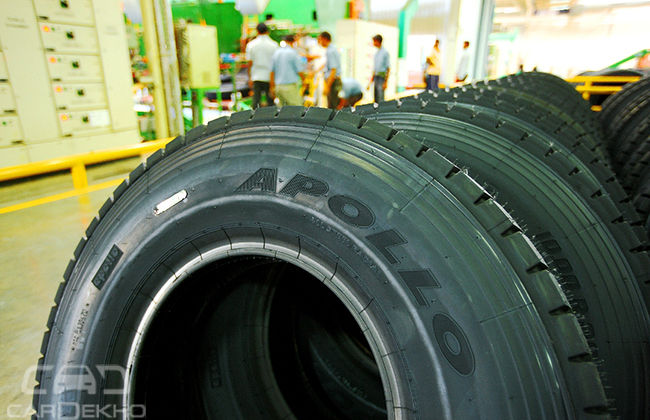The Tyring Story - How A Tyre is Made
Modified On Oct 20, 2015 01:31 PM By Bala Subramaniam
- Write a comment

Tyre - it is probably the most important part of a car after the engine and the most ignored too. And just like every other part of the car, tyres too undergo lots of research and development processes before going on for sale. With the amount of raw materials needed, chemicals included, the different methods and components used to manufacture the different types of tyres, you will be amazed to know there is more to the tyres than just rubber. A visit to the 121-acre Apollo Tyres manufacturing plant in Oragadam, Chennai revealed us about the various processes involved in the making of a tyre. Roll on.

Also Read: An Amazing Drive to Rann Utsav
Before tyres are put into production, they are designed as per the requirements for particular usage and vehicle type and first a prototype tyre is made with the specifications. This prototype is tested and after undergoing various tests and quality checks, the tyre is approved for production. Our tour of the plant started off with a visit to the plant’s Nerve centre, where the company personnel can oversee everything, from the manufacturing units to the telephone networks in the plant. From there we are shown the testing labs where the raw materials in different stages from every batch the plant receive are being tested for quality. Next, it’s time to go into the plant.

The production process of a radial tyre manufacture starts with the mixing of all the raw materials - this includes different rubbers, process oils, carbon black, pigments, antioxidants, accelerators and other additives. Each of these raw materials has certain properties different types of tyres. The mixing process is completely computer-controlled to ensure uniformity and the mixed materials are then sent to the next stage of processing. The big blob of hot mixed black material gets dumped on to a conveyor, then sent through a press, from where they come outs as unending strips that are again cut and sent to different parts of the plant, where they are converted into sidewalls, treads or other parts of the tyre.

Also Read: Essence of a car Warranty
The next task in line is the assembling of the tyre. The inner liner is the first component to go on the tyre building machine. The inner liner comes in place of an inner tube and is resistant to air and moisture penetration. Body plies and belts follow next and are often made from polyester and steel, providing the tyre strength and flexibility.
The bead is built next with bronze-coated steel wire strands fashioned into two hoops are embedded into the sidewall of the tyres. The beads ensure airtight fit with the rim of the wheel. The steel wire strands are inserted into a ribbon coated with rubber for adhesion and wound into loops that are then wrapped together until they are assembled with the rest of the tyre. Two layers of pry fabric called the cords if added next and two strips called apexes stiffen the area just above the bead. To resist chafing from the wheel rim, a pair of chafer strips is added.

Tyre building process begins now where the tyre building machine pre-shapes radial tyres into a form pre-specified by the customer. This is to make sure the many components are in proper position before the tyre goes into the mould. The tyre builder adds the steel belts next to resist punctures and holds the tread firmly against the road. The last part to go on the tyre is the tread, which is pressed firmly together by automatic rollers. The end result is called a green or uncured tyre that goes on for inspection and curing.

The tread pattern that we see on the tyres is caused by the curing press is where tyres get their final shape. Hot moulds, which are engraved with the tread pattern, the sidewall markings of the manufacturer and other required details, press in and vulcanise the tyre. The curing takes around 12 to 25 minutes depending on the size and the temperature reaches over 300 degrees.

Once the curing is done, the tyres are ejected from their moulds onto a long conveyor belt that carries them to final finish and inspection bay. Every tyre is inspected both manually and by machines. Once they pass all the inspections, the tyres are arranged by robots neatly in the finished goods store.
Read More:










